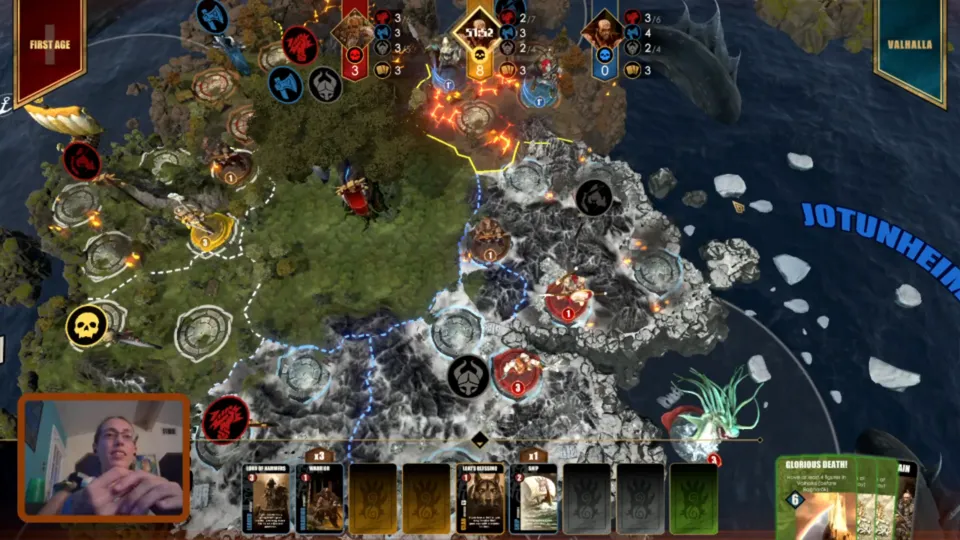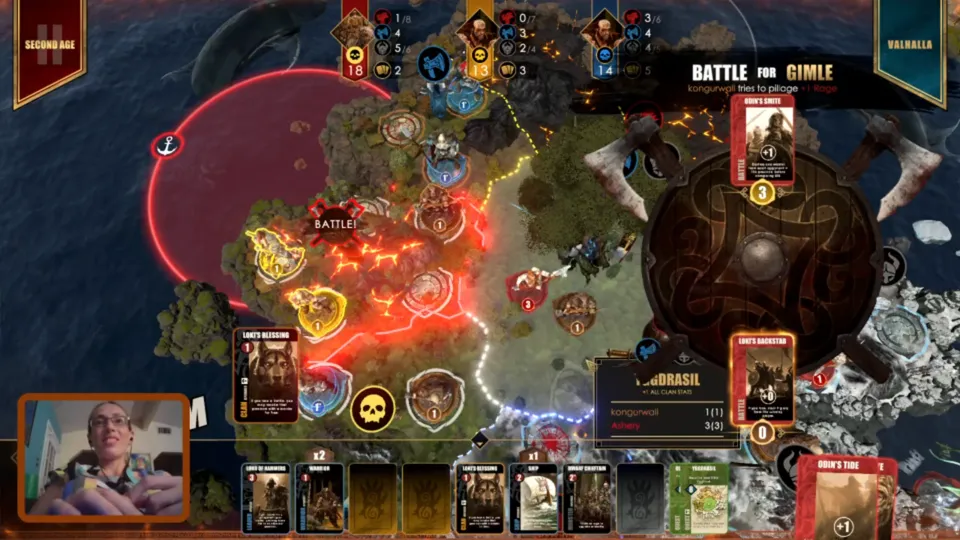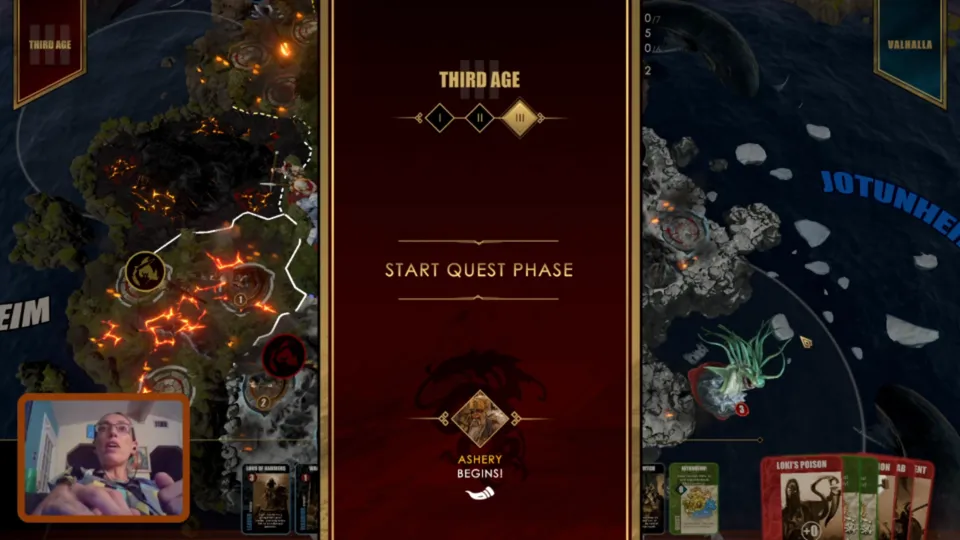Blood Rage
One thing I’ve really missed throughout the pandemic is board games. There’s something absolutely wonderful about sitting down with friends, playing a game, and chattering the entire time. It’s a delightful way to have a good time.
Imagine my joy at discovering how many digital ports of board games I actually have in my library. Blood Rage is the first, and one I haven’t actually played the physical version of.
 The moment I realised I didn’t know how to play this game.
The moment I realised I didn’t know how to play this game.
In Blood Rage, you command a clan of Vikings trying to gain glory as Ragnarok reigns down upon them. Players draft a deck of cards, then use those cards to grant their clan upgrades, blessings, monster allies, and quests. Much like any eurostyle board game, there is a fair amount of strategy in deciding how you’re going to manage your clan, how upgrades will play together, and how you intend to win over the course of three rounds. My particular strategy of “die a lot and use that to fulfil quests” was an active choice, though how wise that choice was is debatable.
 A battle I did not win.
A battle I did not win.
The idea of porting a board game into a digital space is a good one, and, as I said earlier, I’m grateful they exist. However, in practice, there is a lot of the experience of a board game that does not port well into a digital space, particularly when combined with timers and limited chat systems.
My experience with board games - especially board games I am not completely familiar with - involves significant and constant referencing of the rules. I enjoy the process of understanding the rules and the options available to me, and especially not having to memorise everything before I show up for a game. In a physical space, there is room for this. There’s room to make mistakes, to take a little bit to read a card, and to ask fellow players to help with understanding. In a digital space, there is none of that leeway. The computer knows all the rules, and has no patience for your questions or mistakes.
 Me, upset because I lost out on 18 points because there was a rule I didn’t know
Me, upset because I lost out on 18 points because there was a rule I didn’t know
Blood Rage isn’t unique in this. There are some games in my library that are unplayable because of their unforgiving nature and particular interpretation of the rules. Blood Rage is playable, but frustrating. While it’s better than no board games, it doesn’t do much to dissuade the idea that board games are better in person than virtually.
It seems odd that this would be the case, though. There are many games that are board game-esque and draw heavily on mechanics that work well in board games while also being perfectly and playable within a video game space. Slay the Spire springs to mind as a single player example, and Mario Party as a multiplayer example. In both cases, the games draw on the medium they’re in to provide a board game experience with the accessibility of a video game. They give the player time to think, an engaging world, and an opportunity to ask questions as they go. These are elements that board game ports like Blood Rage could benefit immensely from. While it’s easy to add animation to a familiar game board, there is room to do so much better by actually making a video game, rather than just a board game that strips away a good deal of what makes board games work.
I played two games of Blood Rage, one with AIs to make sure I knew how to play, and the second with a group of friends. I highly recommend playing with friends. The AI tries, but isn’t where the budget went. In general, I see these board game ports as fundamentally a chance to sit down and play a game with friends. While it’s not perfect, we had fun, and I suspect if we played a few more times, hiccups with timers and a lack of understanding would fade. For first time players, the difficulty curve is high, but that doesn’t mean you can’t have a good time.
Developer: Exozet
Genre: Turn-Based Strategy, Board Game
Year: 2020
Country: United States
Language: English
Play Time: 2 Hours
